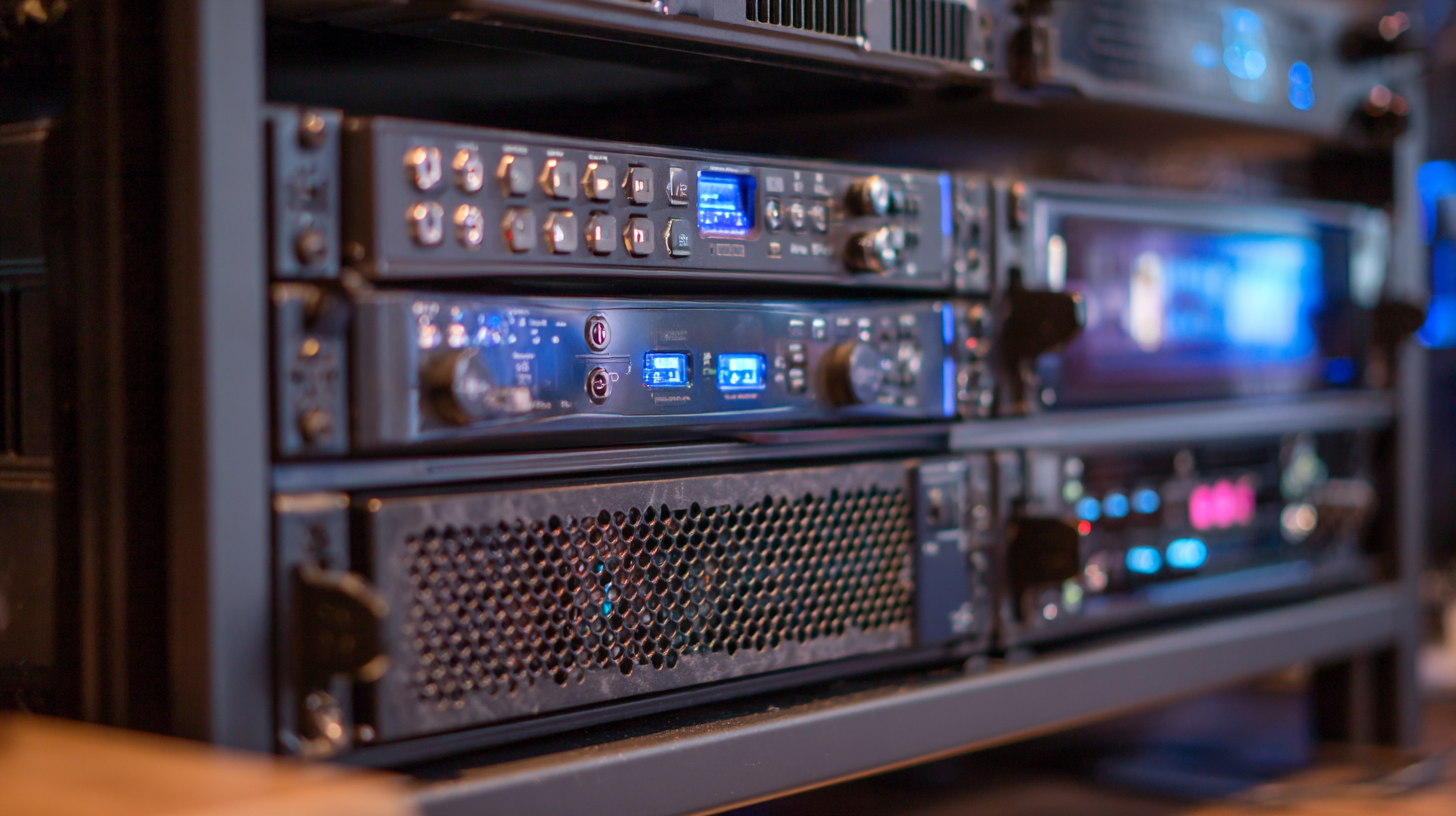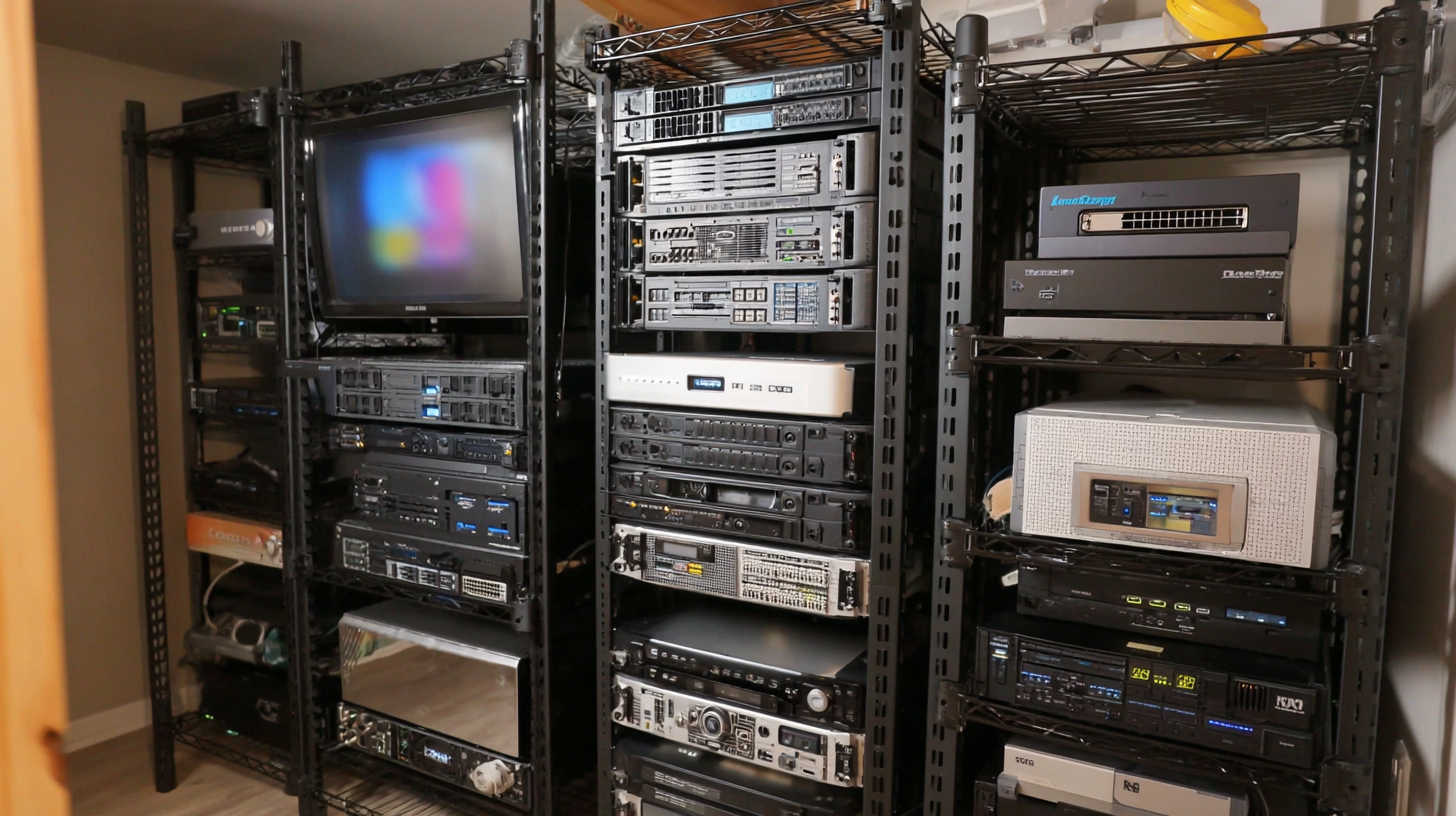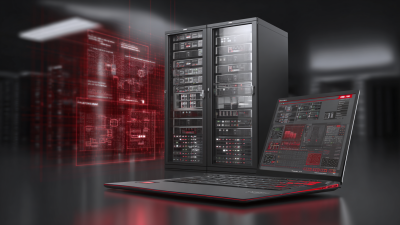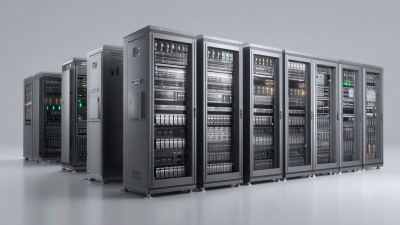Leave Your Message
In today's digital age, the increasing volume of media content requires reliable and efficient storage solutions for home media servers. According to a recent report by Statista, the global network-attached storage (NAS) market is projected to reach approximately $19 billion by 2028, driven by the rising demand for home-based data storage and backup solutions. Choosing the right NAS Storage Rack is crucial for optimizing this valuable storage capacity. A well-designed storage rack not only enhances the performance of your media server but also supports ease of access and organization of your digital assets. As more households embrace streaming services and create extensive multimedia libraries, understanding the importance of selecting an appropriate NAS Storage Rack becomes essential for efficient data management and protection.

When setting up a home media server, choosing the right NAS (Network Attached Storage) storage rack is crucial. In 2023, the global NAS market was valued at approximately $5.9 billion and is expected to grow significantly, driven by the increasing need for data storage among consumers and businesses alike. Understanding the different types of NAS storage racks available is essential for maximizing the functionality of your home media server.
There are several types of NAS storage racks, including tower, rack-mounted, and desktop forms. Tower racks are popular for home use due to their compact size and ease of accessibility, usually supporting multiple hard drives within a single chassis. Rack-mounted options, on the other hand, are designed for standard 19-inch racks and are ideal for users with extensive storage needs, allowing for better organization and scalability. A report by the International Data Corporation (IDC) indicates that by 2026, over 35% of small and medium-sized enterprises will adopt a hybrid cloud strategy using NAS systems, underscoring the growing trend of integrated media storage solutions.
Each type of rack has its advantages and trade-offs, influenced by factors like available space, budget, and specific use cases. For example, desktop NAS racks often offer ease of use and setup but may fall short in expansion potential compared to their rack-mounted counterparts. It’s important to carefully evaluate these types not only based on specifications but also on how they will fit into your overall media server setup and future expansion plans.

When selecting the right NAS storage rack for your home media server, it’s essential to consider several key features that can significantly impact performance and functionality. A study conducted by TechTarget highlights that nearly 70% of users prioritize scalability in their NAS systems, which means your chosen rack should support additional drives and expansions as your storage needs grow. Look for racks that provide flexibility in configuration, allowing you to add or remove drives without hassle.
Another critical factor is ventilation and cooling efficiency. According to a report from IDC, inadequate cooling can lead to significant performance drops, with speeds decreasing by up to 50% under thermal stress. Choose a NAS storage rack designed with robust airflow mechanisms, such as fans and open designs, to ensure your system remains cool during heavy use. Additionally, consider the weight capacity of the rack; a report from the NAS National Association indicates that the average NAS unit weighs between 20 and 50 pounds, so ensure your rack can support the total weight of all components securely. This attention to detail will lead to a more reliable and efficient media server setup in your home.

When it comes to setting up a home media server, selecting the right NAS (Network Attached Storage) storage rack is crucial. A recent report by Tech Research Group indicates that the global NAS market is expected to grow at a compound annual growth rate (CAGR) of approximately 18% from 2022 to 2027. This growth highlights the increasing demand for efficient and reliable data storage solutions, making it essential for consumers to compare popular NAS storage rack brands and models.
Leading brands such as Synology, QNAP, and Western Digital offer a variety of models tailored to different user needs. Synology’s DS220+ model, for instance, supports dual-core processors and scalable storage, making it suitable for both novice users and tech enthusiasts. Meanwhile, QNAP’s TS-451+ is recognized for its flexible configurations and powerful multimedia capabilities, catering specifically to home media enthusiasts. In 2023, a survey conducted by IT Insights showed that 45% of users prioritize performance and scalability when choosing a NAS solution, which outlines the importance of considering these features when comparing different brands and models.
When setting up your home media servers, installing a Network Attached Storage (NAS) storage rack correctly is crucial for optimal performance. According to a recent market analysis by Technavio, the global NAS market is expected to grow by 18% annually through 2025, underscoring the increasing importance of efficient storage solutions for home users. To ensure a smooth installation, begin by assessing your available space and determining the size of the rack needed. Standard NAS racks come in various sizes, typically ranging from 1U to 4U. It’s important to consider not just the physical fit but also factors like airflow and heat dissipation, as NAS devices generate heat during operation.
Before starting the installation, gather all necessary tools and components, including screws, cable management ties, and cooling fans if needed. According to a report from the Consumer Technology Association, a well-ventilated setup can improve device longevity and performance. When installing your NAS, ensure that each unit is properly secured and that cables are neatly organized to prevent interference. Regular maintenance checks post-installation can significantly reduce downtime. By following these steps and utilizing effective installation practices, you can create a reliable and efficient NAS setup that meets your home media needs.
When it comes to maintaining and upgrading your home media server storage rack, attention to detail is crucial. A well-organized storage system not only enhances performance but also prolongs the lifespan of your NAS devices. According to a recent study by Statista, the global NAS market is projected to grow to over $10 billion by 2025, highlighting the growing demand for efficient data management solutions at home. This surge in investment necessitates regular upgrades and maintenance of storage racks, ensuring they can accommodate increasing data needs.
To effectively manage your home media server, consider implementing modular storage solutions that allow for easy expansion. Research from MarketsandMarkets indicates that modular storage solutions can improve data access times by up to 30% compared to traditional racks, as they provide better organization and airflow management. Regular maintenance tasks, such as dusting and ensuring adequate airflow, can further enhance performance, reducing the risk of overheating and potential data loss. By investing time in systematized upgrades and maintenance routines, you can ensure your NAS storage rack serves your home media server efficiently for years to come.






